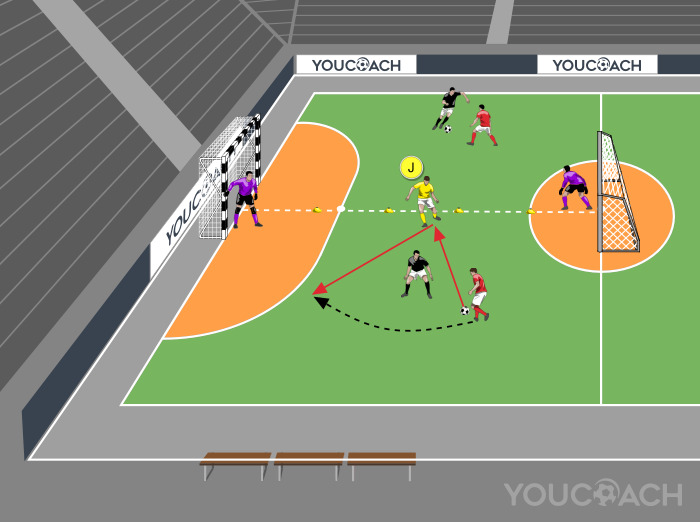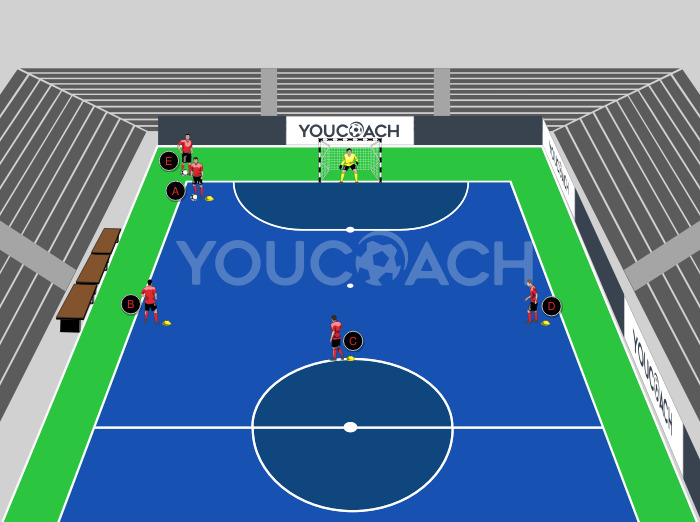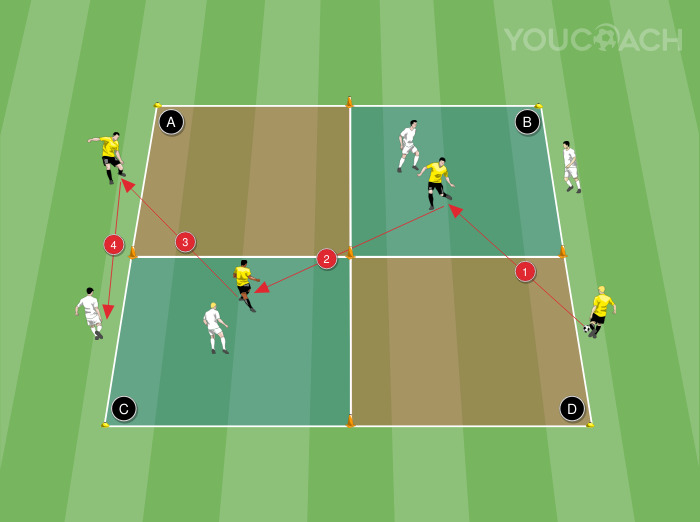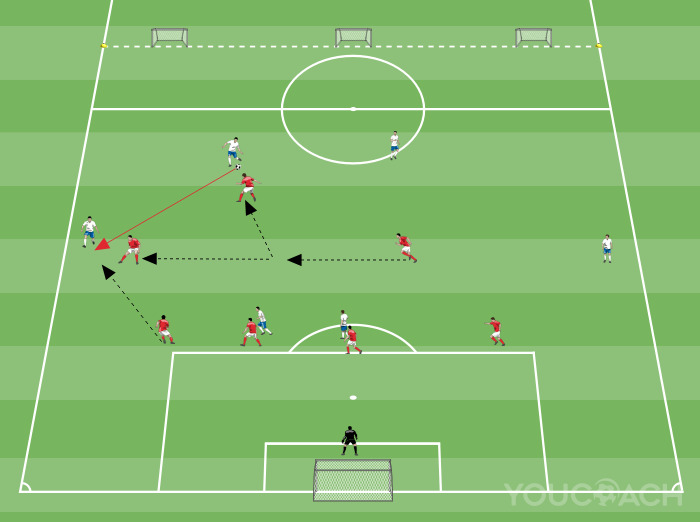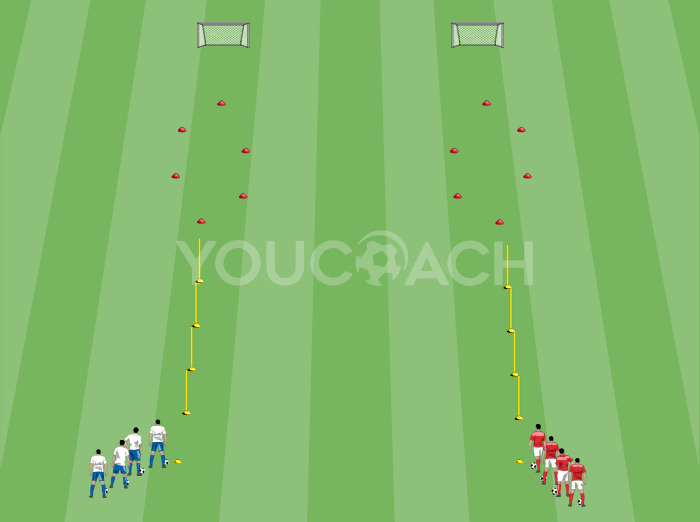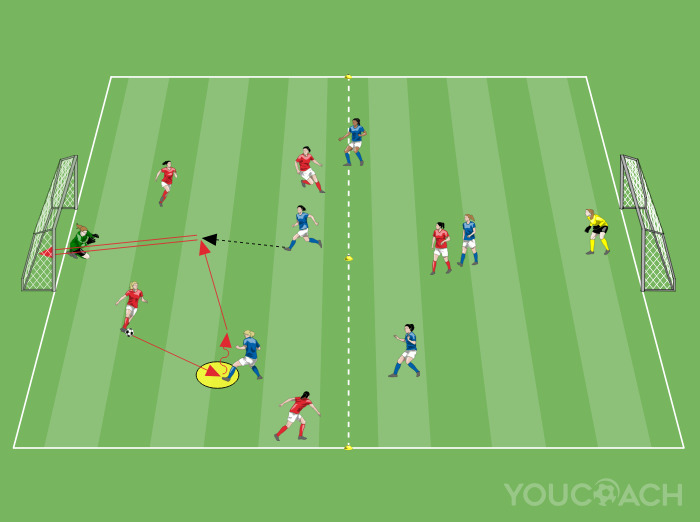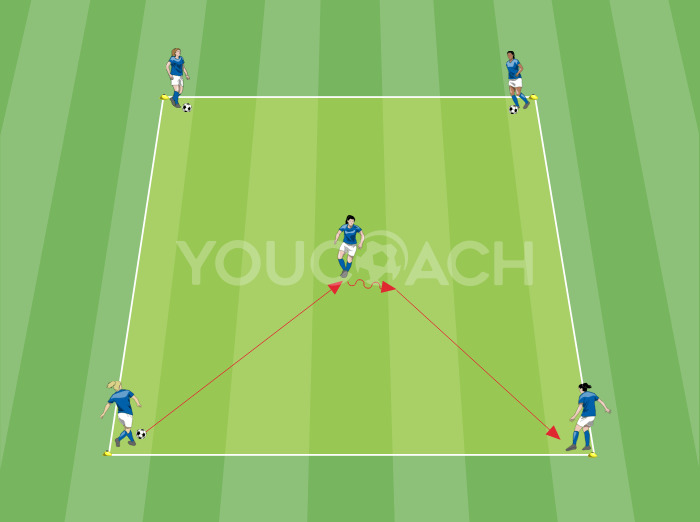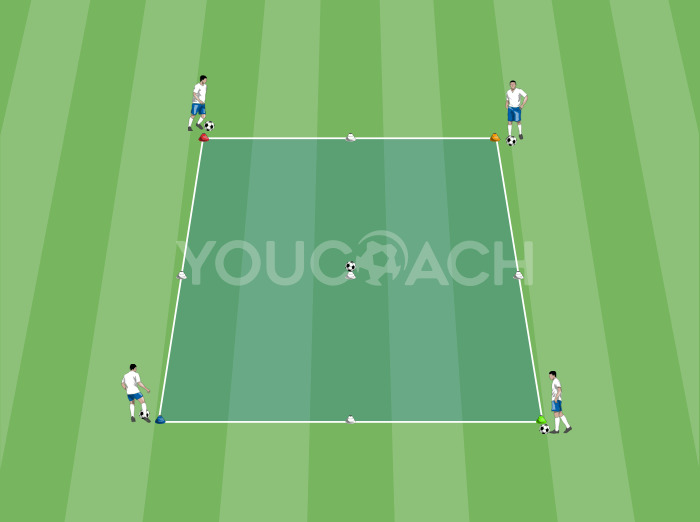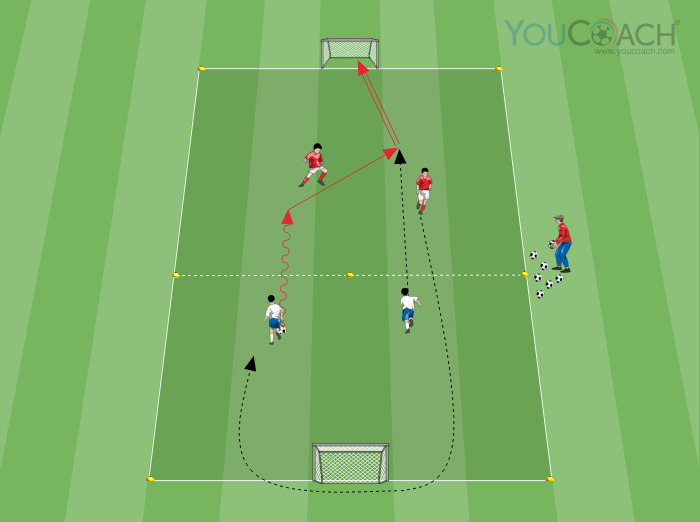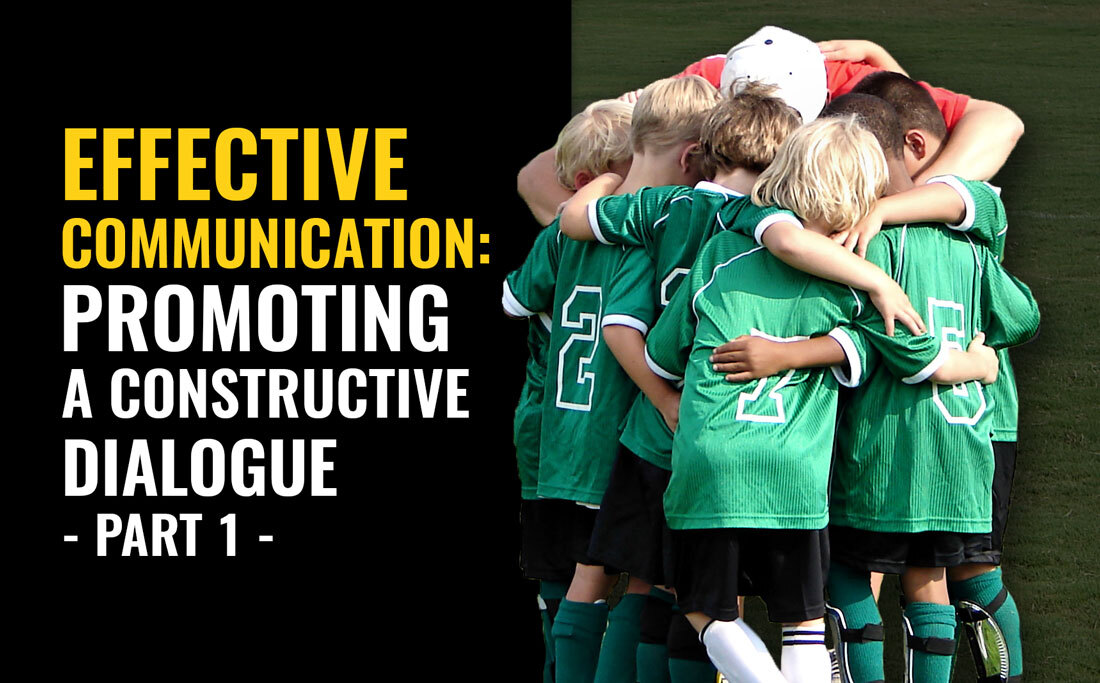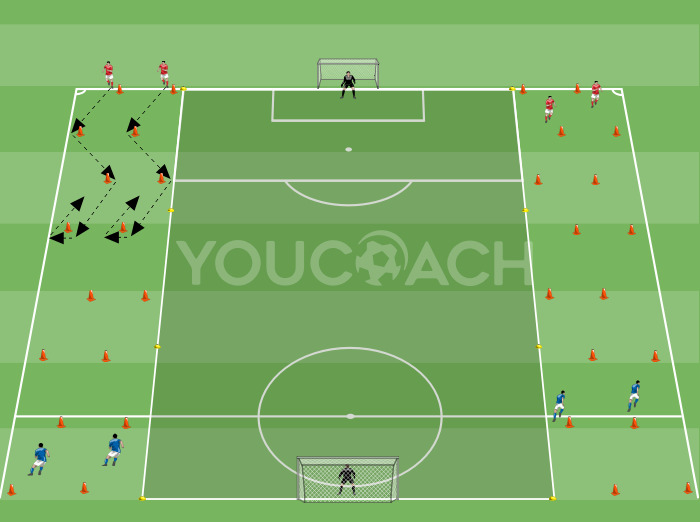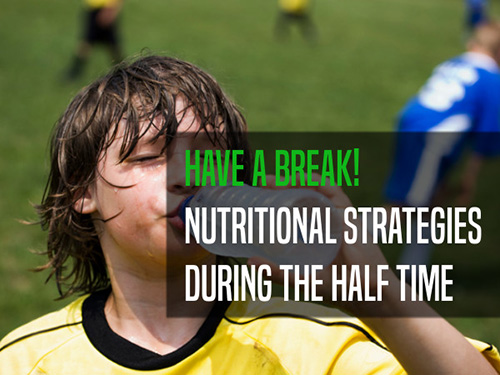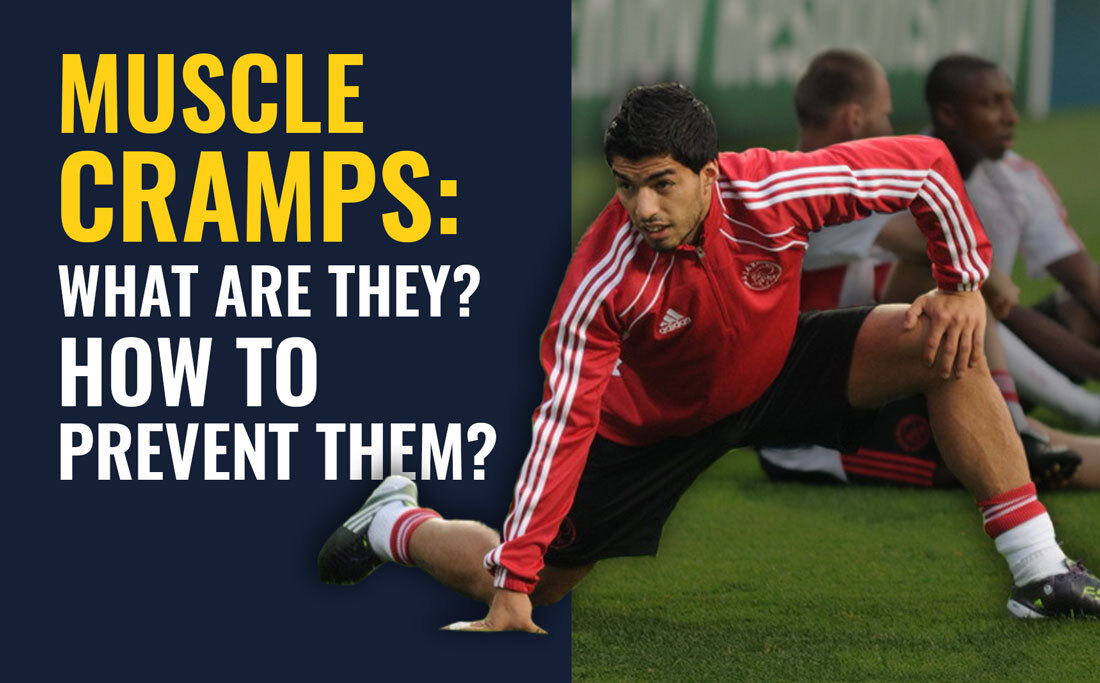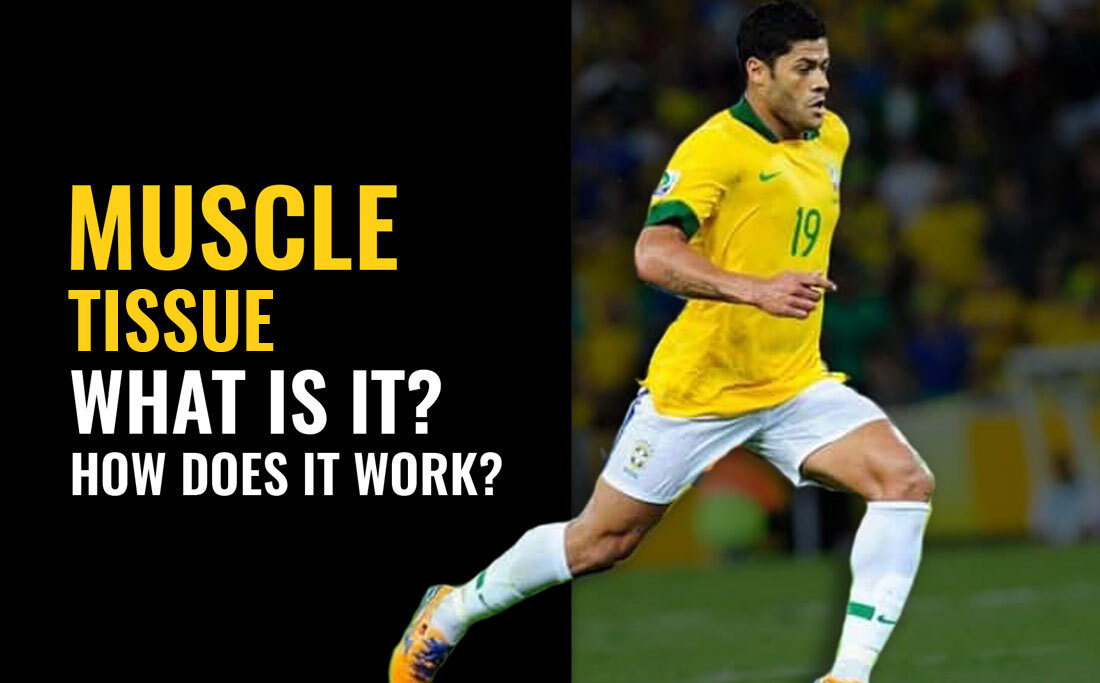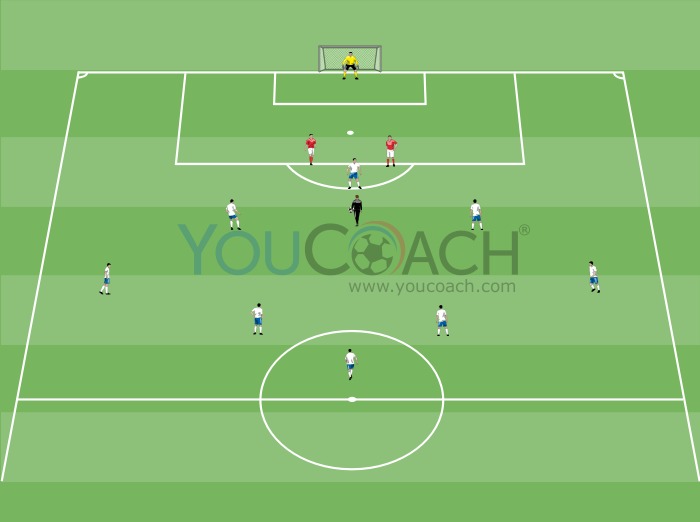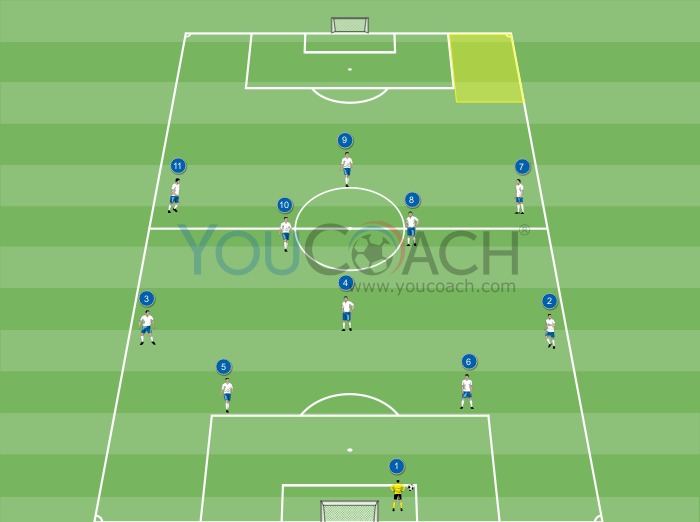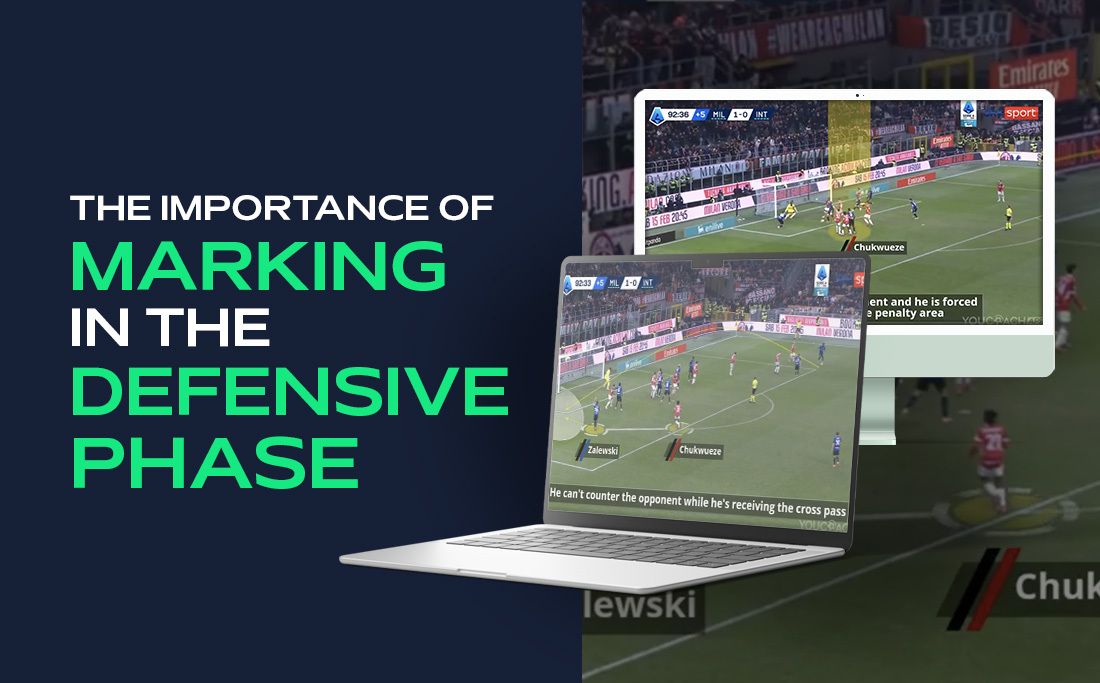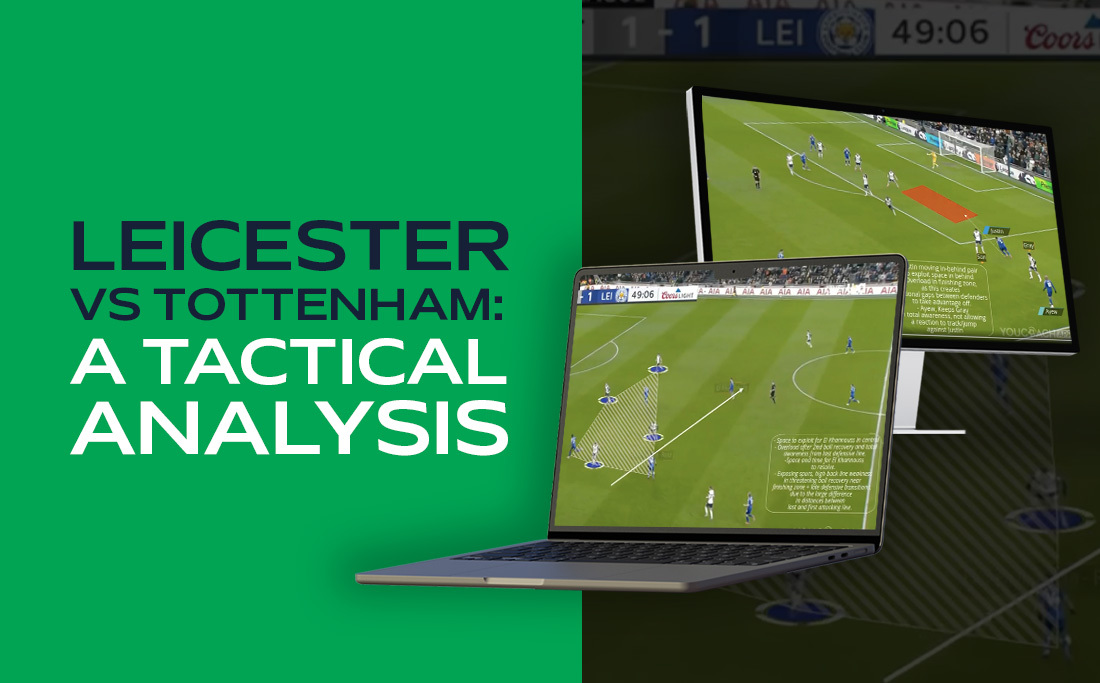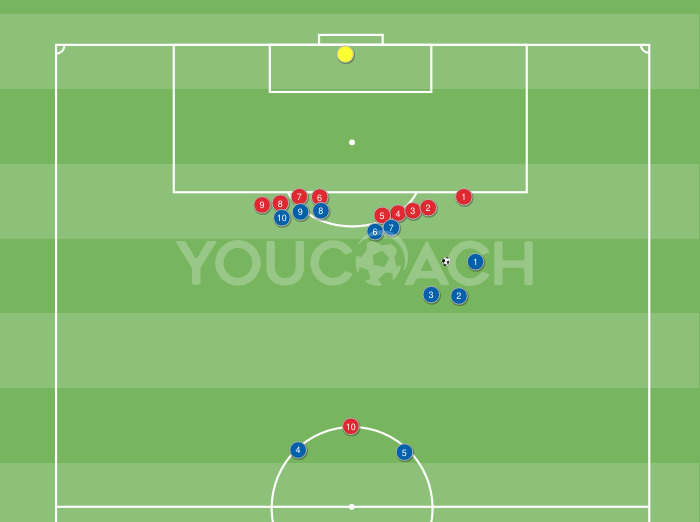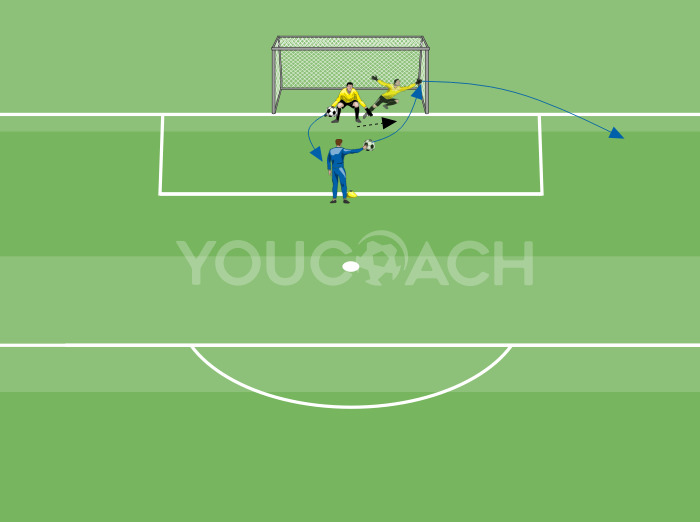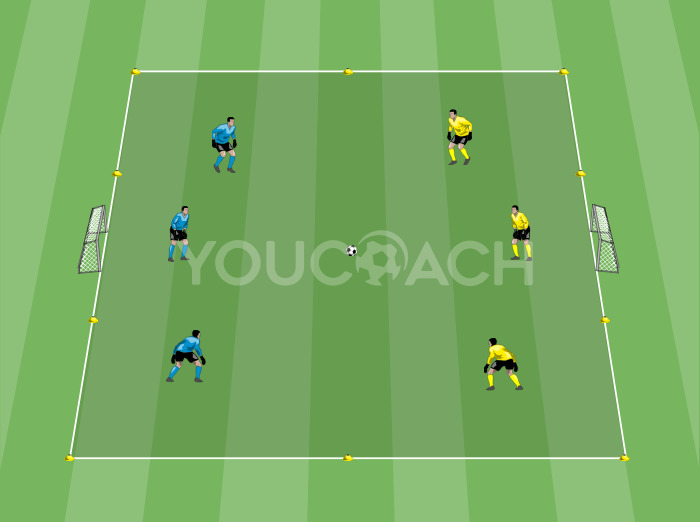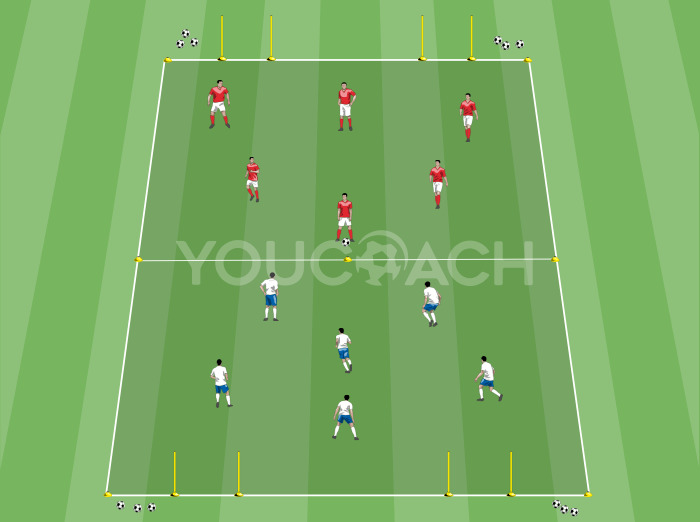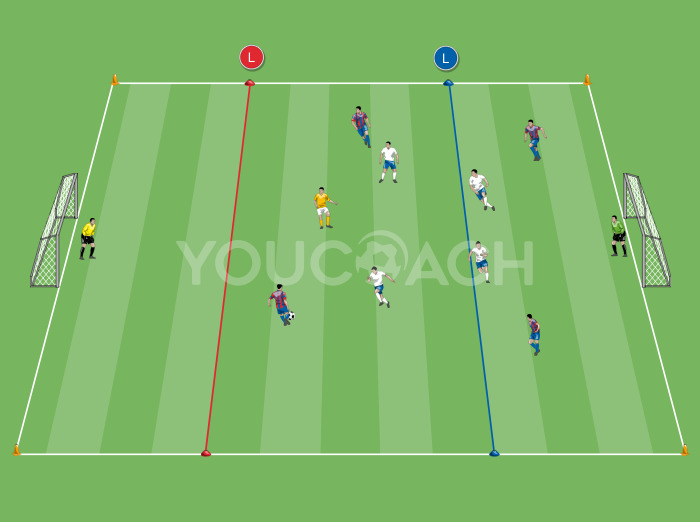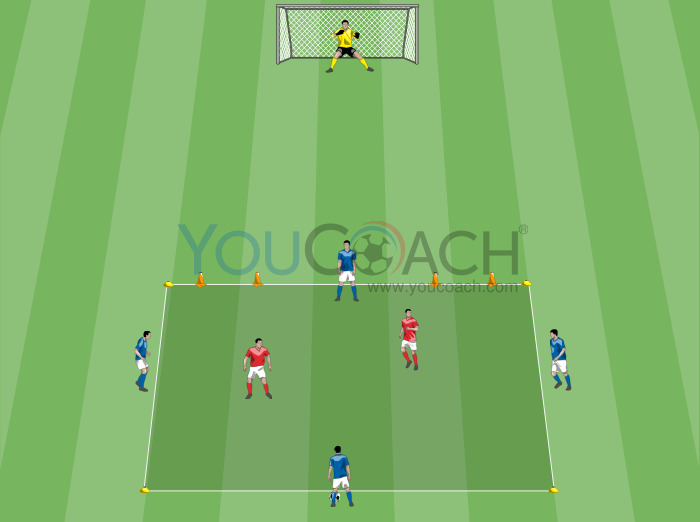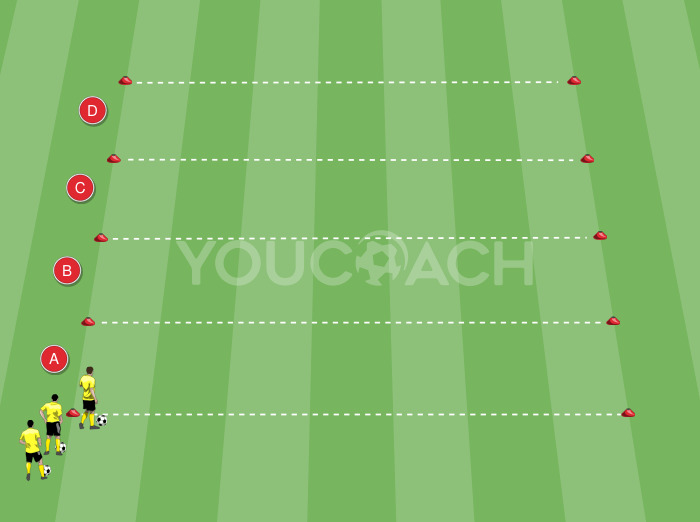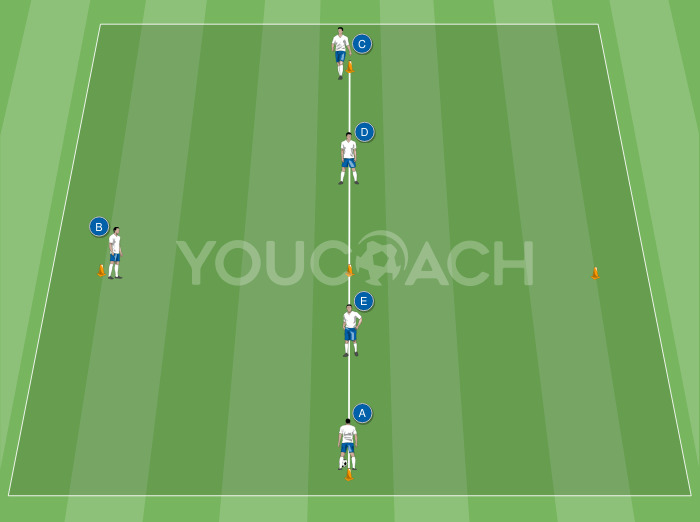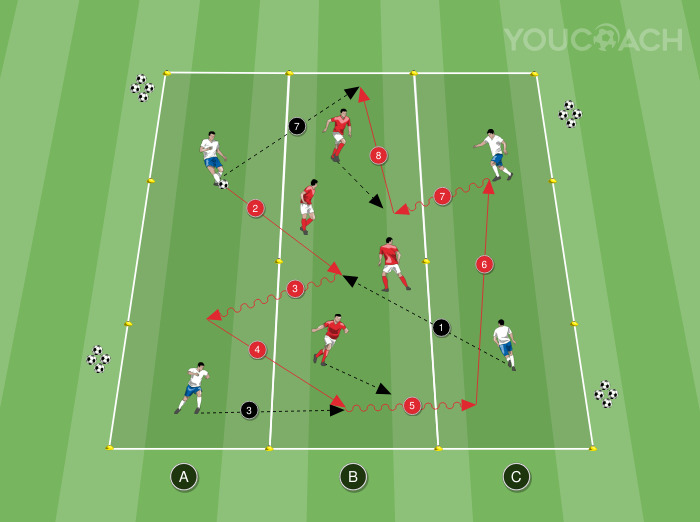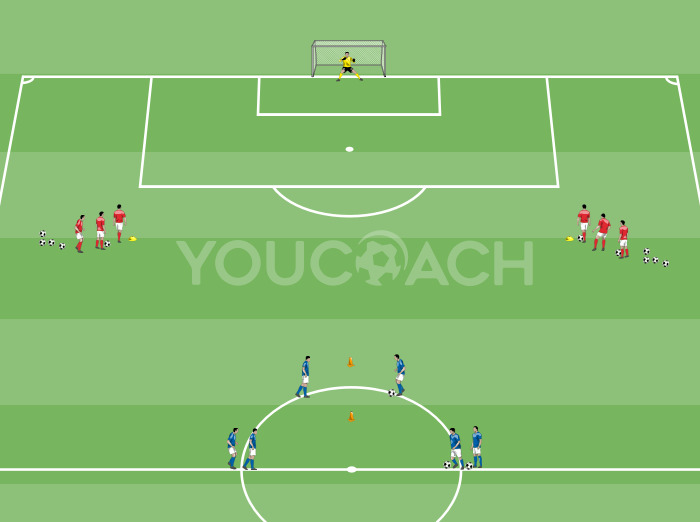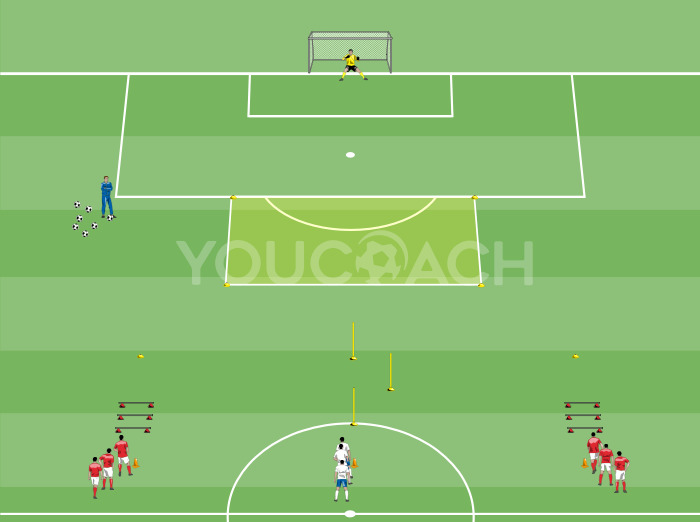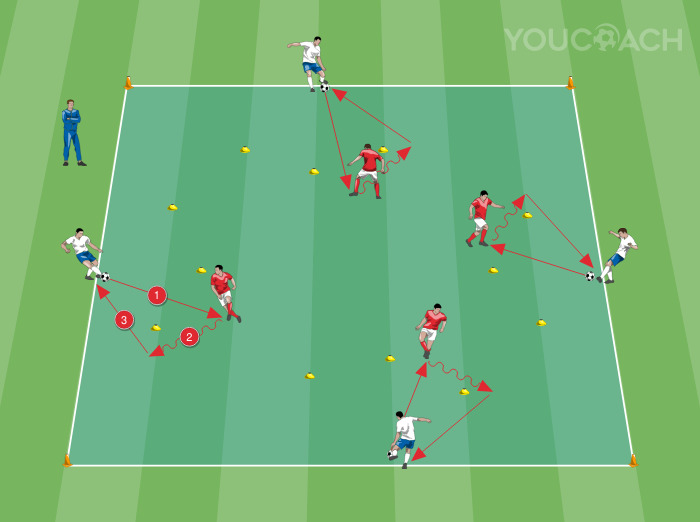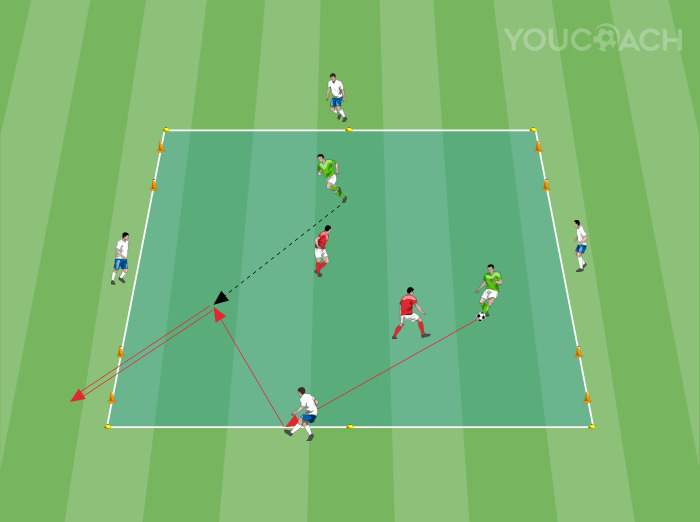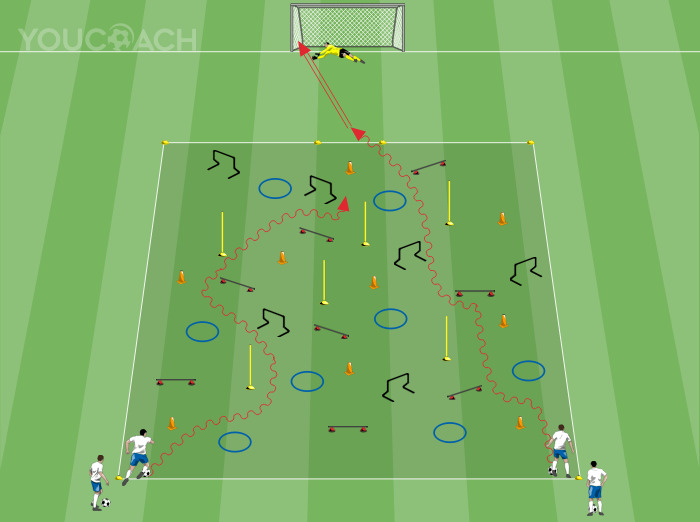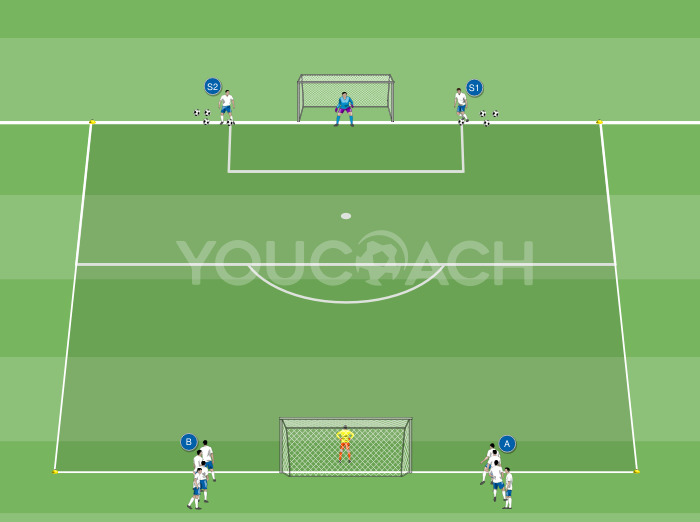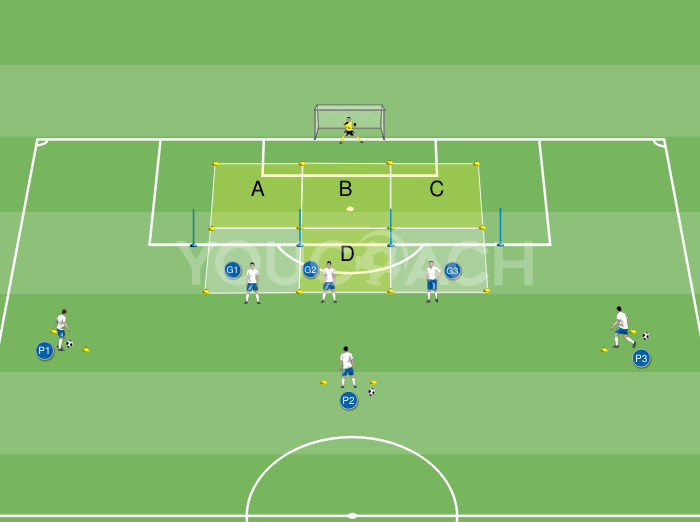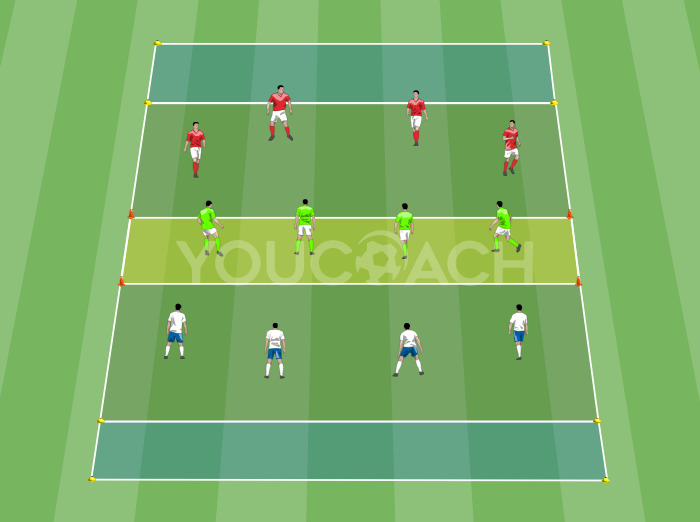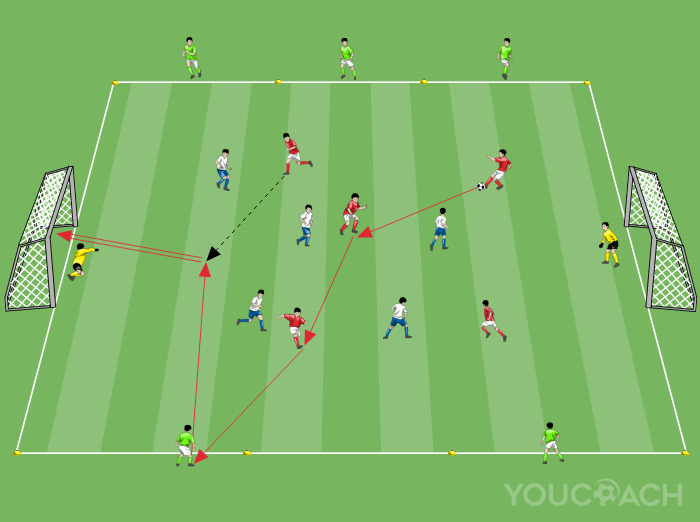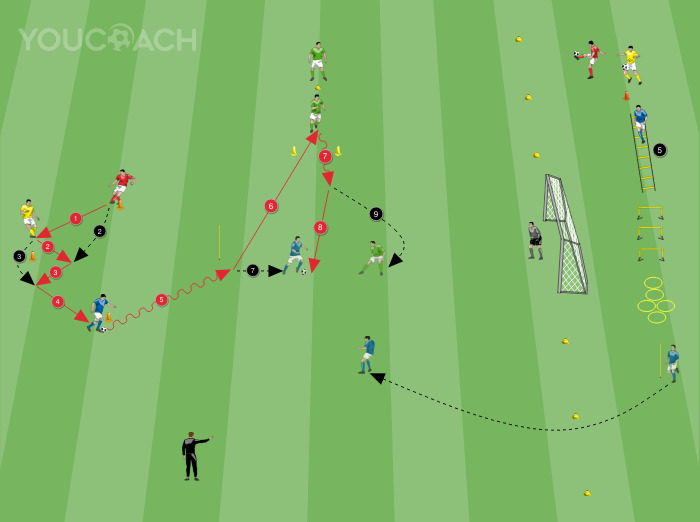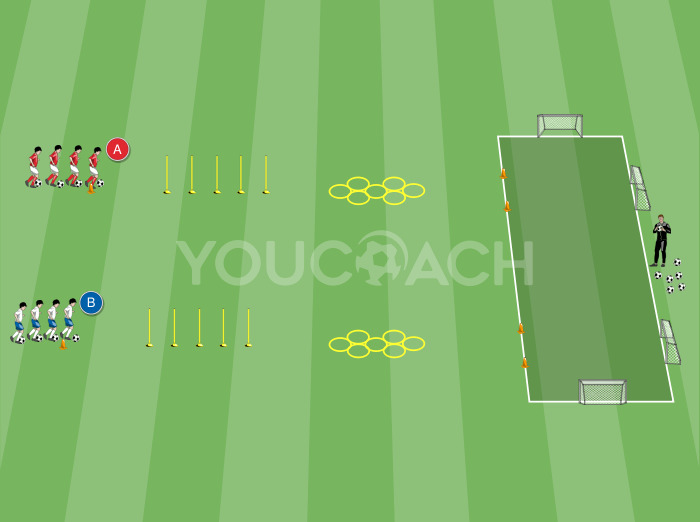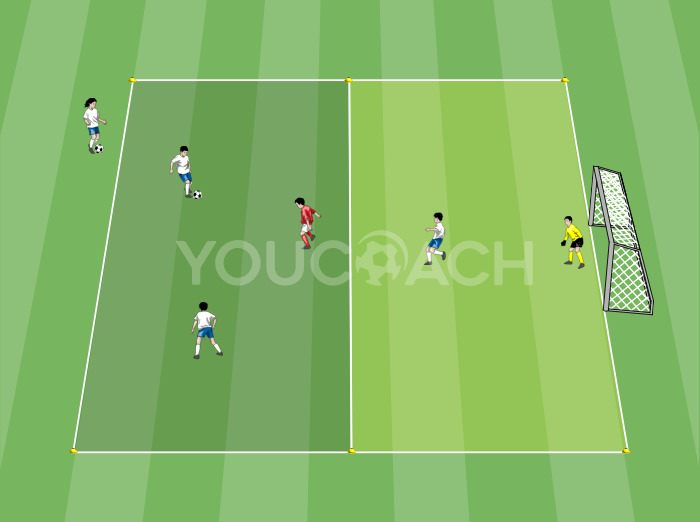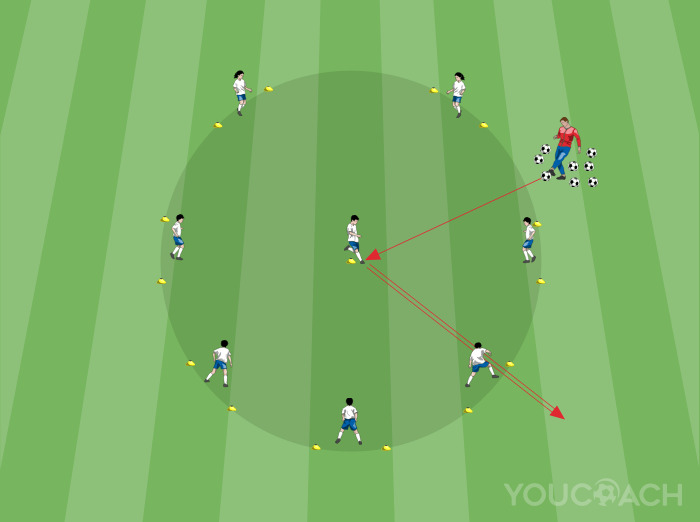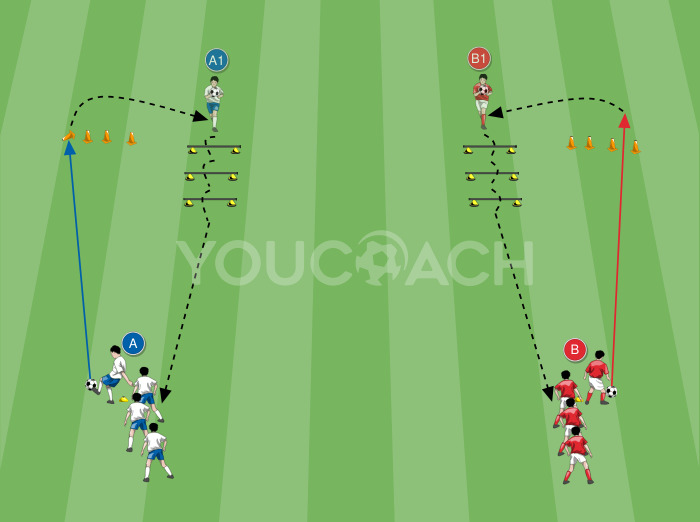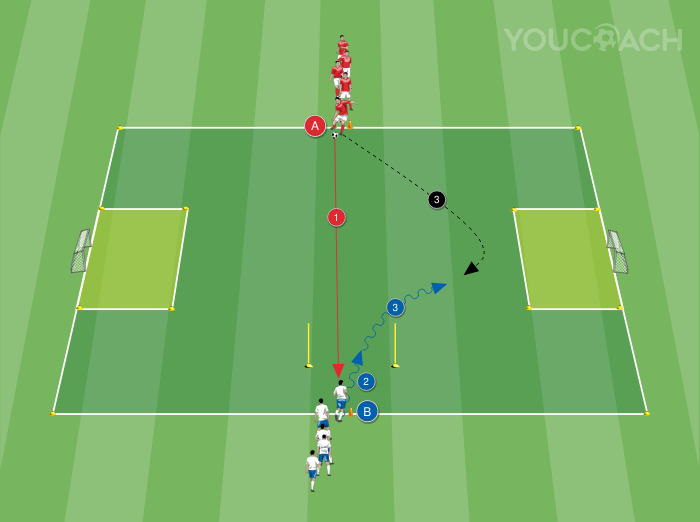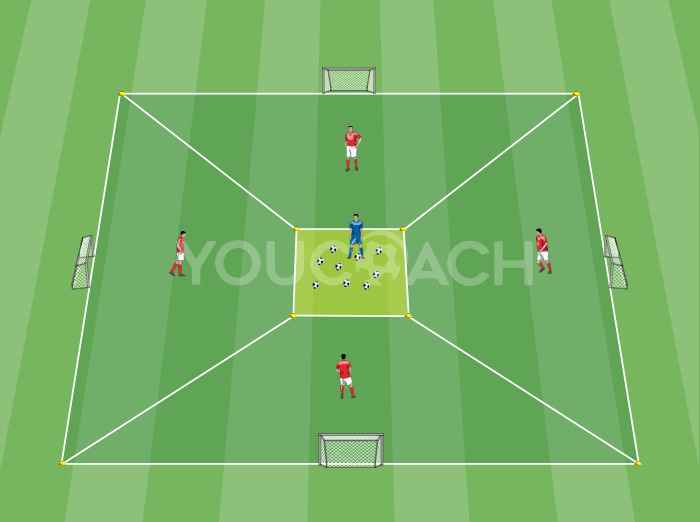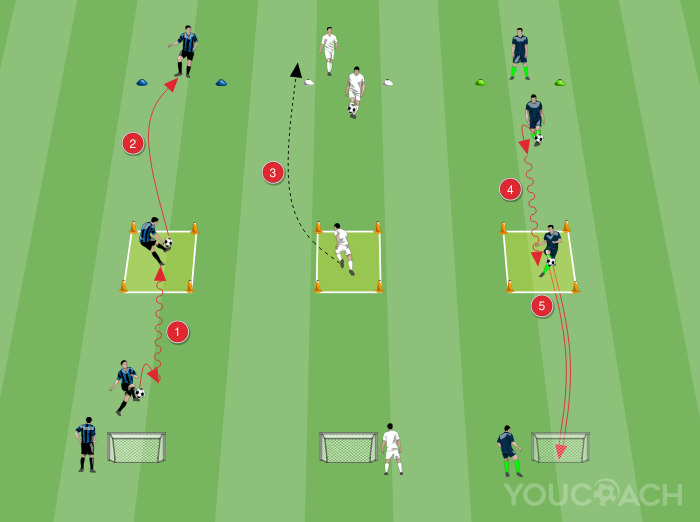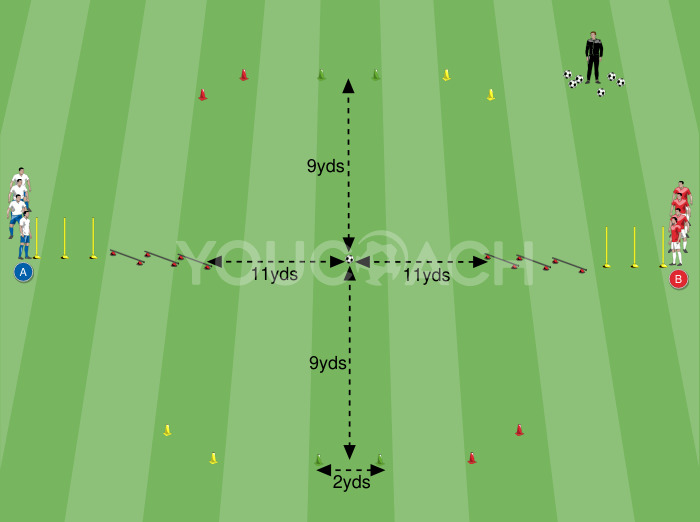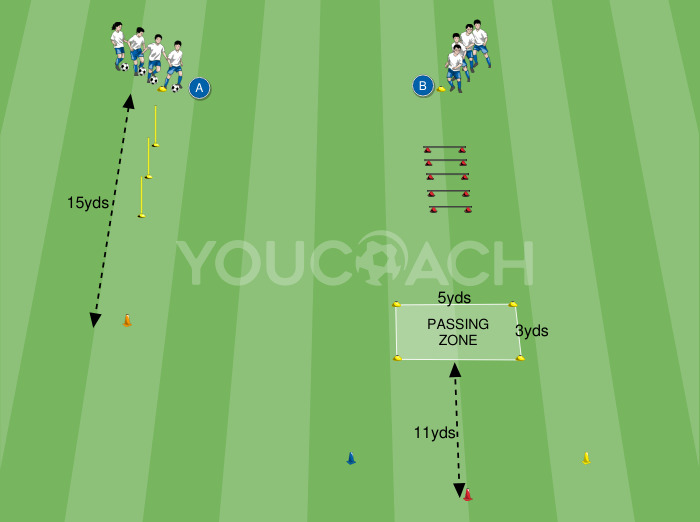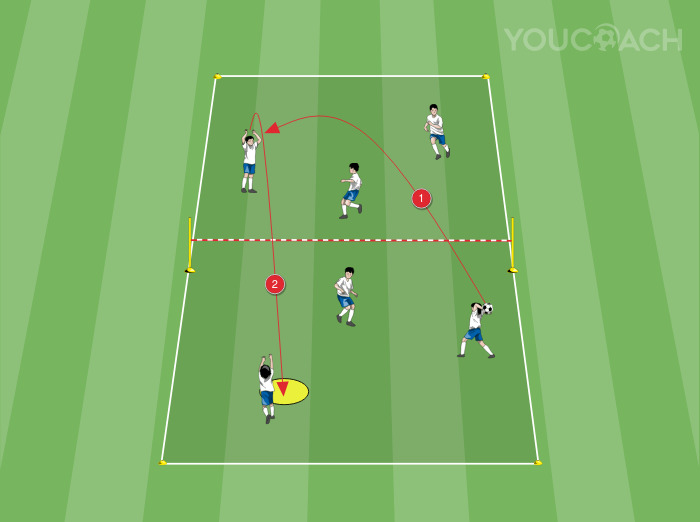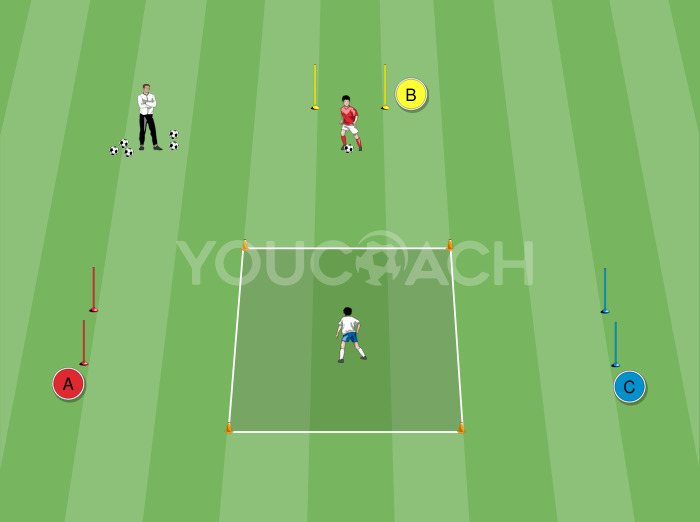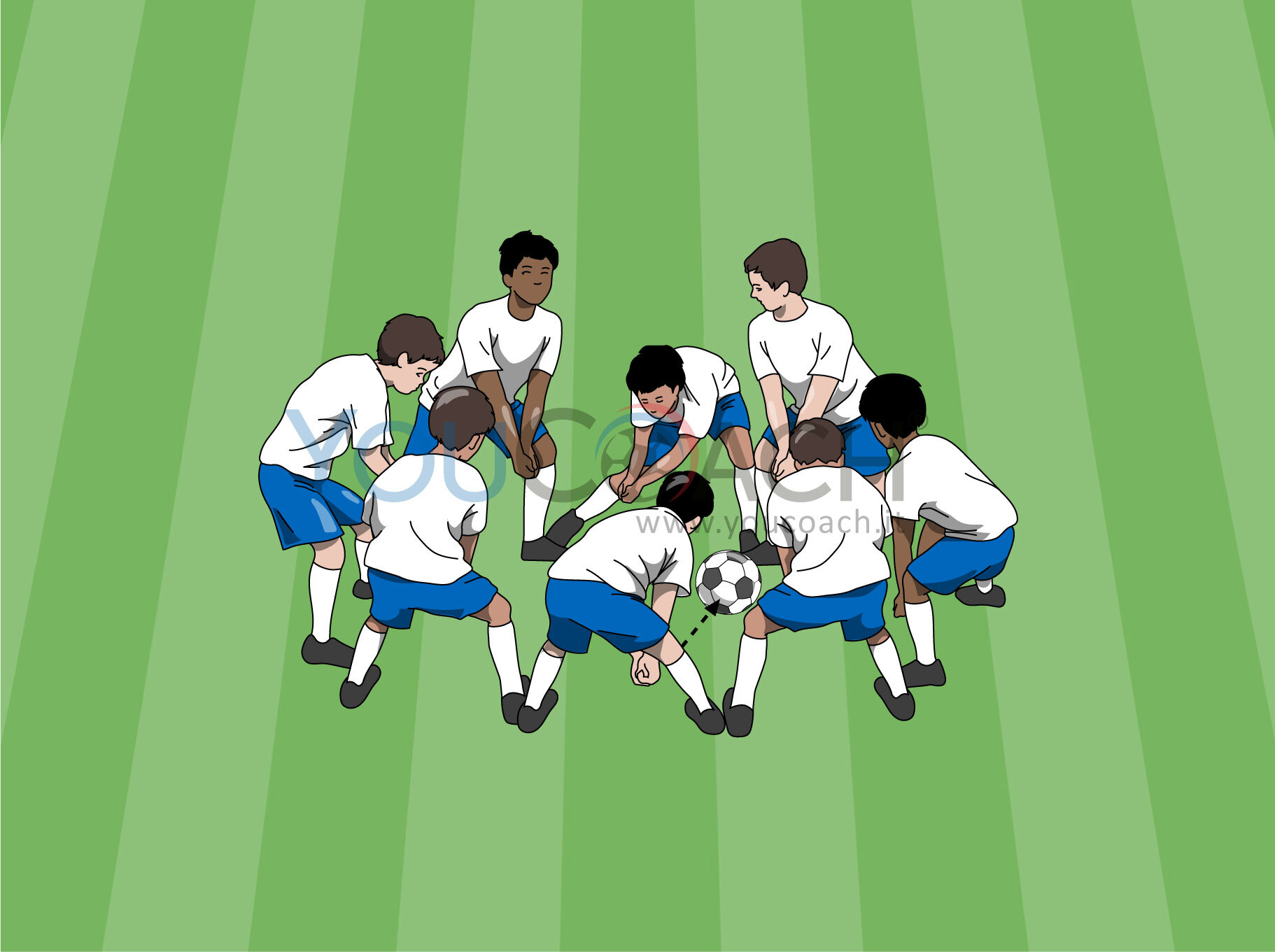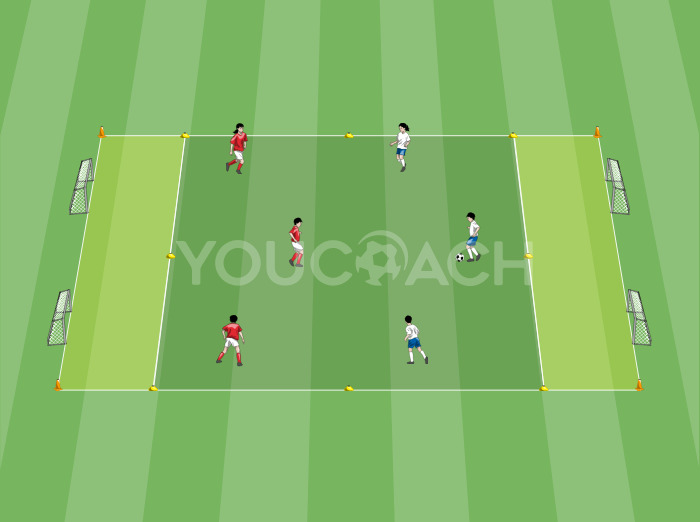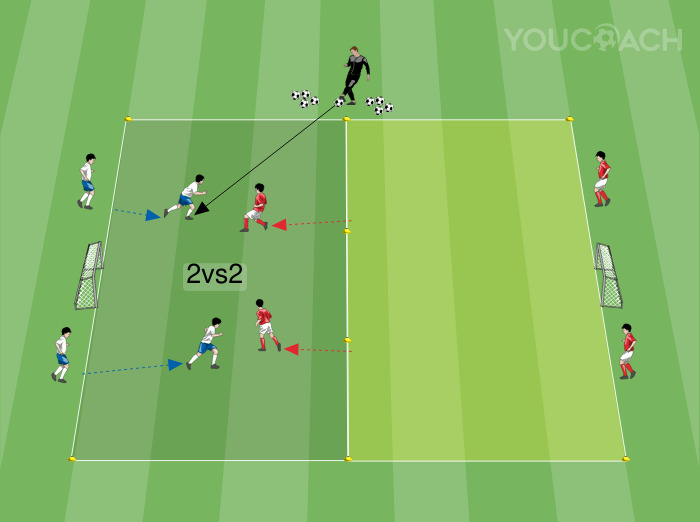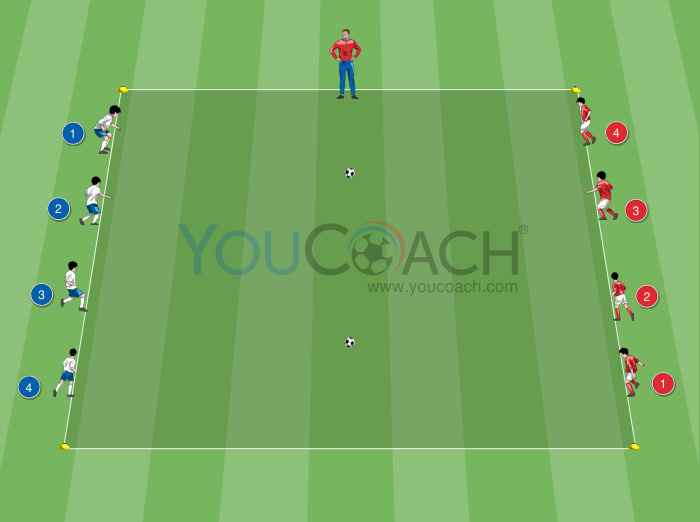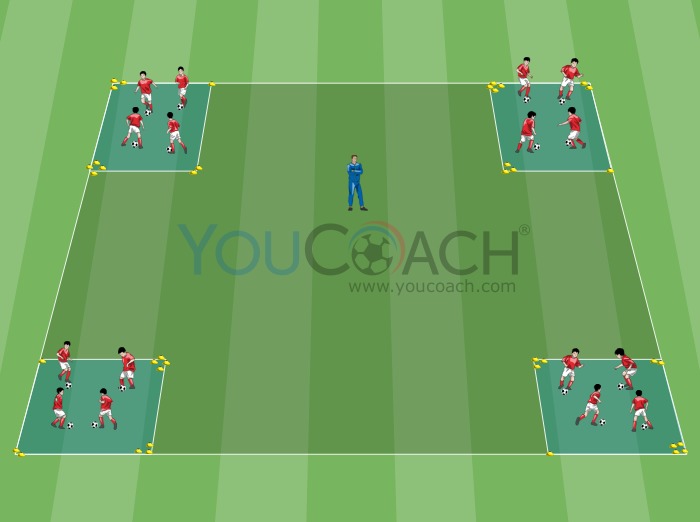1 v 1 with neutral players and side support players
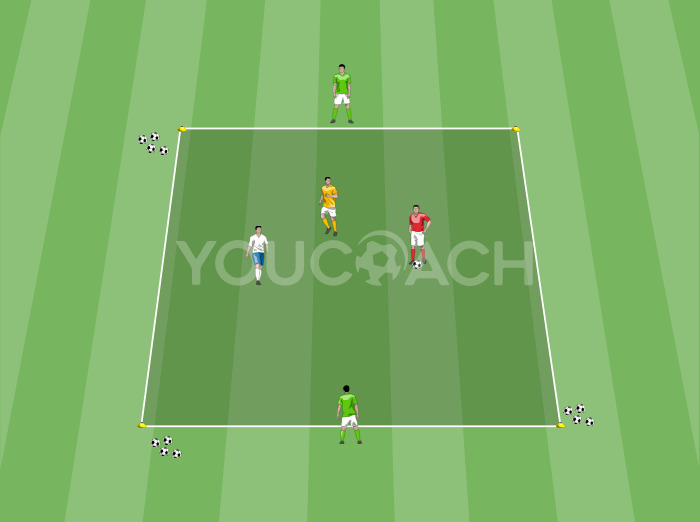
- 4 markers
- Balls
- 3 vests of different colors
- Playing Area: 13x13 meters / 14x14 yds
- Players: 5
- Duration: 14 minutes
- Series: 4 of 2'30'' each with 1 minute of recovery between sets
| Summary | Secondary Objectives |
|---|---|
|
Ball possession in numerical superiority with two side supports, useful for oriented control and give-and-go in a situational context. |
Support, Combination play, Mark, Passing, Receiving, Receiving to turn, Body shape, Intercepting, Tackling, Endurance, Cooperation, Endurance, Feint, Counter move, First touch, Oriented control, Losing your marker, Pass, Positioning, Marking, Intercepting, Tackling, Possession triangles, Wall Pass, Triangle, Collaboration, Read the intentions |
Use the four markers placed on the vertices to create a square with sides measuring 13 meters/14 yards. Position three players inside the square (two opponents plus a neutral player who plays with whoever has possession of the ball). Place two support players outside the square on two opposite sides. Keep a good supply of balls nearby to ensure continuity of possession.
- Inside the possession square, a 1 v 1 is played (red player against white player in the picture)
- The inside neutral player (yellow) plays in support of the player in possession of the ball
- The aim of the exercise is to receive the ball from one support player and play it to the opposite one, with the help of the neutral player if necessary, as many times as possible
- At the end of each series, change the players' roles
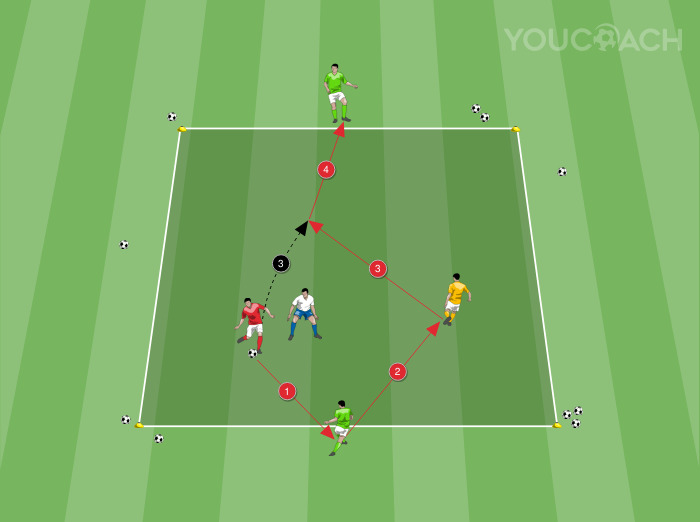
- The two players inside the square play a maximum of two or three touches
- The neutral player can only play one-touch
- If the attacker receives the ball from a support, they can only play to the opposite one (they cannot pass the ball back to the support player that passed it to them)
- When rotating players, avoid letting players inside the square play more than two consecutive possessions
- Free touches for players within the playing area (this encourages work on dribbling and ball protection)
- Allow two touches for the neutral player (especially if we see that they are having difficulty receiving the ball with the right posture to direct play)
- This exercise, during the activation phase, is very useful for contextualizing oriented control: in fact, in addition to trying to unmark from the direct opponent, the attacker must receive the ball with the body ready for the next play on the opposite side or try a one-two with the joker
- By prohibiting the wall play with the first support player, the attacker is encouraged to risk control to open up play on the opposite side, otherwise (from experience) they would simply pass the ball back in order to work less in the run-up phase and play safely
- The joker is very useful because it provides fundamental support if the defender works well to close the passing line to the opposite side and encourages further unmarking after the attacker has played the ball
- Maintain high intensity when in possession of the ball


